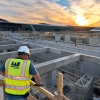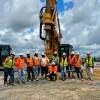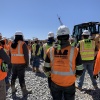ELECTION-PROOF YOUR GROWTH: WHY ‘WAIT-AND-SEE’ IS NOT A STRATEGY
By Chad Champine, Vice President Industrial Group
It’s officially that time again! Election season is in full swing and with it, the usual rhetoric toward business climate which seems to engulf our day-to-day business operations, while indiscriminately fueling waves of variability, uncertainty, and risk. We’ve entered the period in this four-year cycle where geopolitical risk and economic outlook are inversely proportional, and we work tirelessly to forecast both the potential and the very real risks to our operations.
The everyday businessperson becomes a highfalutin economist, citing the most memorable snippets of the latest Jobs Report, BLS CPI/PPI Index, and commonly regurgitates nuggets of information gleaned from last night’s Mad Money, or this morning’s Bloomberg Surveillance report. Meanwhile, your tenured economists have all silently hunkered down, but not before bestowing upon us their sage “Wait-and-See” advice that your everyday businessperson latches onto and confidently repeats in abundance. We’re advised that “many businesses are simply sitting on the sidelines until a clearer outcome of the game plays out” or that “companies are waiting until after the election when the dust settles, before heavily investing again.”
Sound familiar? Of course it does, we hear it every… four… years…but here’s why anyone looking to deploy a successful growth strategy should not and cannot accept a “Wait-and-See” approach. When you take your foot off the gas, you slow down. Add into the mix any political headwinds, supply chain risk, labor shortages, or any other number of impacts to increase volatility and the deployment of your strategic plan comes grinding to an abrupt halt.
In March of 2023, IndustryWeek published an article titled “Manufacturing Growth Strategy Planning: 5 things to Get Right First.” I encourage you to read this article, in which I provide an in-depth roadmap for navigating a strategic growth plan and highlight the significance of performing an internal due-diligence assessment to fully understand your capacity and utilization, prior to embarking on facility expansions, renovations, or new facility construction efforts.
To conclude, I’d like to draw inspiration from The Oracle of Omaha himself, Mr. Warren Buffett, and his fives rules for building wealth which include Investing for the Long Term, Staying Informed, Maintaining a Competitive Advantage, Focusing on Quality, and Managing Risk. These rules can be similarly applied to the deployment of any sound business growth strategy. Have faith in the strategic vision that you and your leadership teams have laid out, trust your process, and minimize the election noise (risk) that would otherwise steer you away from your strategic path to success and leave your organization sitting on the sidelines without a competitive advantage.















